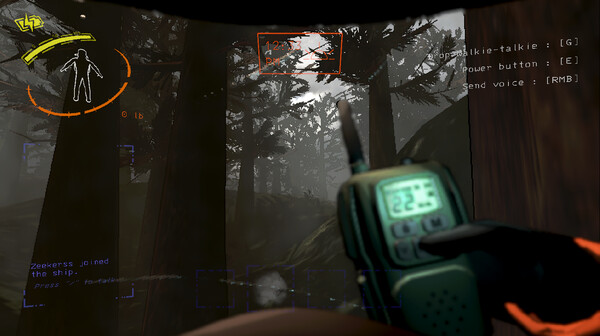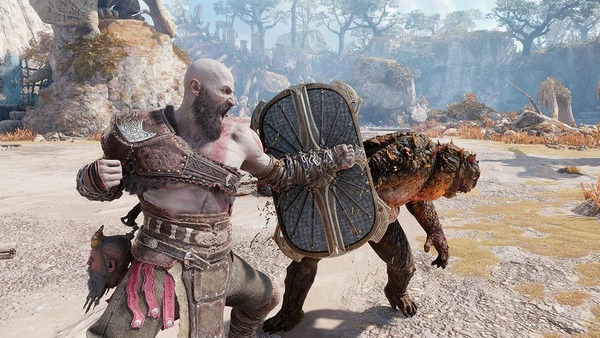Popular Now
Introduction
Lethal Company has gained a cult following for its unpredictable missions, eerie environments, and chaotic team-based gameplay. While many players celebrate its cooperative elements, one issue lies just beneath the surface: the inconsistent and punishing difficulty of co-op coordination during high-risk missions. This article explores how communication, task distribution, map design, and AI threats all converge to create one of the most complex coordination challenges in modern co-op games.

Understanding the Core Loop of Lethal Company
Before diving into the issue, we must first understand the game's core structure. Players are assigned scavenging missions on alien planets, exploring derelict facilities and collecting salvage while avoiding horrifying threats. Each run is timed and filled with danger, forcing players to work together with limited tools and voice communication.
What makes Lethal Company unique is its open-ended approach to mission structure. There are no checkpoints, few scripted sequences, and an unforgiving death mechanic. This freedom is both a feature and a flaw — especially when miscommunication becomes fatal.
The Real-Time Pressure Cooker of Communication
In many multiplayer games, communication is a luxury. In Lethal Company, it’s a necessity. Players must share their positions, warn of enemy activity, and make quick decisions during extreme stress. Unfortunately, the in-game communication tools — including limited-range voice and signal interference — often fall short.
Without clear lines of contact, groups quickly devolve into chaos. One player might open a high-security door that releases a monster while another is setting up a salvage point, causing instant failure. The pressure to communicate effectively is relentless, and one mistake can cost the entire mission.
Limitations of In-Game Tools
-
Walkie-talkies have limited range and frequently cut out.
-
In-game voice chat suffers from distortion in certain zones.
-
No ping system for silent communication or marking items/enemies.
Task Distribution: A Double-Edged Sword
Lethal Company requires players to assign and fulfill roles on the fly. Typically, one stays near the ship (navigator), another monitors the door system, and the rest explore. But there’s no enforced role system or automated task tracker. Everything is player-driven, which leads to unpredictable outcomes.
In well-coordinated teams, this freedom leads to efficiency. In casual or random groups, however, players often overlap tasks or abandon roles without notice. This disorganization heightens mission failure, especially during the critical end-game phase when time is running out and threats escalate.
Consequences of Poor Task Assignment
1. Multiple Players in the Same Area
This leads to wasted time and increased exposure to threats.
2. No One Watching the Clock
The failure to monitor mission time often results in last-minute panic or missed evacuation.
Environmental Hazards and Spatial Disorientation

Lethal Company's map design is intentionally disorienting. Hallways loop back on themselves, doors blend into walls, and lighting is minimal. This design adds tension, but it also complicates coordination. Without a shared mental map, players frequently become lost — even when sticking together.
What’s more, the game rarely marks areas once explored or cleared. This forces players to constantly communicate their movements or risk duplicating efforts. In high-risk missions, where time is short and enemies are many, these inefficiencies compound quickly.
The Role of Sound in Player Coordination
Sound is both a friend and foe in Lethal Company. Many threats are audio-based, reacting to player noise, which forces teams to whisper or stop talking entirely. But with communication already strained, going silent often leads to confusion and accidental deaths.
Ambient noise — like power surges, machinery, or monster cries — can drown out teammate voices, further crippling coordination. The game’s reliance on audio realism adds to immersion but comes at a high cost to gameplay clarity.
Audio Conflicts During Critical Moments
-
Two players talking over a monster growl, missing a key warning.
-
Sound-based threats like the “Siren Head” forcing silence mid-plan.
-
Radio crackling during high-alert situations breaking immersion and strategy.
AI Threats That Punish Disorganized Teams
Enemies in Lethal Company aren’t static spawns — they react dynamically to player behavior. Some hunt based on noise, others set traps or mimic players. These AI are designed to break uncoordinated teams. If one player gets separated, the AI exploits it instantly.
Some creatures, like the “Stalker” or “Mimic,” specifically target isolated or quiet players. This rewards disciplined teams but disproportionately punishes those still learning coordination. The lack of any real recovery system (like revives or respawns) makes these losses permanent.
The Problem of Panic Under Time Pressure
Every mission in Lethal Company has a ticking clock. The later it gets, the more aggressive enemies become. This mechanic heightens tension but causes uncoordinated teams to panic. Panic leads to split decisions — “I’ll just run for it!” — and the team dynamic collapses.
Time pressure also limits discussion and planning. Groups rarely have time to decide on alternate exits, fallback points, or salvage priorities. This leads to mission-ending chaos in the final minute, especially when combined with AI ambushes or locked doors.
Lack of Support Systems for New Players

Unlike other co-op games like Phasmophobia or Deep Rock Galactic, Lethal Company offers very little tutorial content. New players are thrown into complex missions with no guidance. This steepens the learning curve and places a heavy burden on veterans to carry coordination.
Newcomers often don’t know map objectives, enemy behaviors, or even basic controls like how to operate the terminal. The result? Delays, accidental alerts, or friendly fire that break down team synergy. Without in-game onboarding, true co-op balance feels unreachable for mixed-skill lobbies.
Solutions and Community Workarounds
The Lethal Company community has tried to fix coordination issues through modding, Discord groups, and external tools like maps and timers. Some mods even introduce ping systems or custom UI elements. However, these aren’t officially supported and often break with updates.
In the absence of developer-side improvements, players have turned to role-playing protocols and designated team leads. These approaches do help — but they require extra time and buy-in, which isn’t always possible in quick matches or public lobbies.
Common Community Solutions
-
Designated Navigator/Caller system
-
Using Discord instead of in-game voice
-
Pre-made loot routes and safe zone maps
Potential Developer Fixes for Co-op Balance
There are several improvements that developers could implement to ease co-op frustration without breaking immersion. These include a simple ping system, optional minimap sharing, or adjustable AI aggression based on team performance.
Another useful fix would be role-based tools — for example, letting one player be a full-time navigator with enhanced map access, while others have scavenger-specific tools. This kind of semi-class-based approach could preserve freedom while enhancing coordination.
Recommended Features
1. Dynamic Difficulty Scaling
If one player dies early, AI intensity could scale down slightly to give the team a fighting chance.
2. Communication Enhancements
Text pings, waypoint systems, or better voice fidelity in dangerous zones could bridge the chaos gap.
Conclusion
Lethal Company thrives on chaos, but its greatest weakness — and oddly, its greatest strength — lies in its co-op coordination demands. For seasoned teams, the game is a masterclass in tactical horror. For everyone else, it often devolves into frustrating noise, accidental deaths, and unfulfilled missions.
If the developers can improve communication tools, implement onboarding systems, and add scalable AI responses, the game’s challenge will remain high but become more accessible. Until then, coordination remains the true final boss of Lethal Company.

















